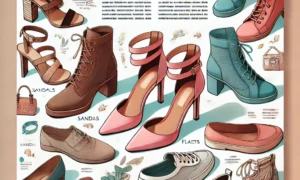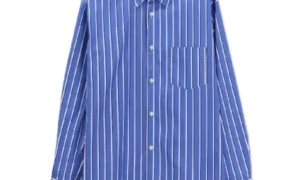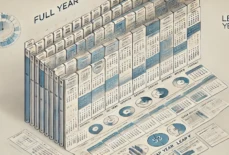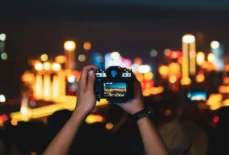Depression is a complex and often misunderstood mental health condition that affects millions of people worldwide. It can manifest in various ways, impacting one’s mood, energy levels, and overall sense of well-being. While there are various treatment options available, one avenue that has gained recognition for its therapeutic benefits is art. Depression art, created by individuals who have experienced or are currently experiencing depression, serves as a powerful medium for self-expression, healing, and raising awareness about mental health.
The Intersection of Art and Depression: Exploring the Healing Power of Creativity
Artistic expression has long been recognized as a way to convey emotions and experiences that may be difficult to put into words. Through the use of colors, shapes, textures, and various art techniques, individuals living with depression can externalize their internal struggles, giving form to the often intangible aspects of their condition. Depression art can serve as a vehicle for exploring and processing complex emotions, such as sadness, loneliness, despair, and hopelessness, providing a tangible outlet for expression.
One of the notable benefits of depression art is its ability to serve as a non-verbal communication tool. Art can bridge the gap between the internal and external worlds, allowing individuals to convey their experiences to others in a way that transcends traditional verbal communication. This can be particularly valuable for those who find it challenging to articulate their emotions or who face stigma surrounding mental health issues. Depression art can initiate important conversations, create empathy, and foster understanding, ultimately breaking down barriers and reducing the isolation often associated with depression.
Engaging in the artistic process can also have a cathartic effect on individuals living with depression. The act of creating art can provide a sense of purpose, accomplishment, and control, which can be particularly empowering for those whose depression may leave them feeling powerless. Engrossed in the artistic process, individuals can momentarily escape their distressing thoughts and immerse themselves in the present moment, experiencing a respite from their depressive symptoms.
Furthermore, art offers a unique avenue for self-reflection and self-discovery. Through the creation of depression art, individuals can gain insights into their own experiences, emotions, and personal narratives. Artistic expression can help individuals connect with their inner selves, enabling them to explore their identities, values, and aspirations. This introspective aspect of depression art can contribute to a greater sense of self-awareness, which is crucial for personal growth and recovery.
In addition to its individual benefits, depression art also has the power to raise awareness about mental health issues and challenge societal perceptions. By sharing their art with others, individuals living with depression can spark conversations, challenge stereotypes, and contribute to reducing the stigma surrounding mental health. Art exhibitions, online galleries, and community projects dedicated to depression art serve as platforms for fostering dialogue, educating the public, and encouraging empathy and support for those affected by depression.
While depression art can be a valuable therapeutic tool, it is essential to recognize that it is not a substitute for professional mental health treatment. Art should be seen as a complementary approach, used in conjunction with evidence-based interventions such as therapy, medication, and self-care practices. It is important for individuals living with depression to seek appropriate support and guidance from mental health professionals to develop a comprehensive treatment plan tailored to their specific needs.
In conclusion, depression art serves as a powerful medium for self-expression, healing, and advocacy. Through the act of creating art, individuals living with depression can externalize their internal struggles, communicate their experiences, and embark on a journey of self-discovery. Depression art can foster empathy, raise awareness, and challenge societal perceptions, contributing to reducing the stigma associated with mental health. As a complementary approach, depression art can enhance traditional treatment methods and provide individuals with a meaningful outlet for self-expression and healing.
Also check other important quotes written on depression quotes and other some articles Mini facelift
Effects of depression art
The effects of depression art can be significant and wide-ranging, impacting both the creators and viewers of the artwork. Here are some of the effects that depression art can have:
- Emotional catharsis: Creating or experiencing depression art can provide a cathartic release of emotions. It allows individuals to express and process difficult feelings associated with depression, such as sadness, anger, and despair. This release can bring a sense of relief and emotional healing.
- Self-reflection and introspection: Depression art encourages introspection and self-reflection, as individuals delve into their inner experiences and confront their emotions. This process can lead to increased self-awareness, self-acceptance, and personal growth.
- Validation and connection: Depression art can provide validation and a sense of connection for both the artists and viewers. It lets individuals know that they are not alone in their experiences, fostering a sense of community and reducing feelings of isolation.
- Communication and advocacy: Depression art serves as a powerful communication tool for raising awareness about mental health and advocating for better understanding and support. Through their artwork, individuals can share their stories, challenge stigma, and promote empathy and compassion.
- Empowerment and agency: Engaging in depression art can empower individuals by giving them a sense of control and agency over their emotions and experiences. It allows them to reclaim their narratives and express themselves in a way that feels authentic and empowering.
- Inspiration and hope: Depression art can inspire others who are going through similar experiences by showcasing resilience, creativity, and the possibility of healing. It can instill a sense of hope and encourage individuals to seek help, engage in self-care, and pursue their own creative outlets.
- Therapeutic benefits: Creating and experiencing depression art has therapeutic benefits for mental health. It can serve as a complementary approach to traditional treatments, such as therapy and medication, providing additional avenues for expression, self-exploration, and emotional well-being.
- Social change and impact: Depression art has the potential to contribute to broader societal change by challenging stereotypes, influencing public perceptions, and advocating for improved mental health support systems. It can spark conversations, promote understanding, and create a more compassionate and inclusive society.
Conclusion
Overall, the effects of depression art are multifaceted and can positively impact the mental well-being of both creators and viewers. By providing a creative outlet, fostering self-expression, and promoting understanding, depression art plays a valuable role in personal healing, community support, and broader social change.

























































